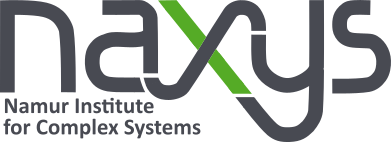
- This event has passed.
Laura Gagliardi (University of Chicago)
Title: Reticular frameworks after the Nobel prize: their application for catalysis and CO2 capture
Abstract:
Following reflection on the 2025 Nobel Prize in Chemistry awarded for advances in metal– organic frameworks (MOFs), this lecture explores how state-of-the-art quantum chemical and classical simulations are driving the discovery of reticular materials. Computation today is not only a tool to rationalize experiments, but increasingly a predictive engine for tailoring functional frameworks.
In the first part of the presentation, I will highlight our integrated computational and experimental study of catalytic MOFs, where post-synthetic modification introduced metal– sulfur active sites [1]. Quantum chemical calculations elucidated how sulfur incorporation modulates the electronic structure and catalytic reactivity of the frameworks. These insights provided a mechanistic understanding of hydrogenation catalysis and guided the design of MOFs with tunable properties.
The second part will focus on covalent organic frameworks (COFs). Thanks to their modular architectures and tunable functionalities, COFs offer a highly versatile platform for CO2 direct air capture. We performed a multiscale investigation of COF-999 and its amine- functionalized precursor COF-999-NH₂, integrating density functional theory, molecular dynamics, and grand canonical Monte Carlo simulations with experimental validation [2]. Our findings highlight subtle energy differences in laterally shifted stackings, intrinsic stacking heterogeneity, and pronounced layer buckling. We found that extensive amine– nitrile hydrogen bonding and persistent pore water lead to undesired polymerization that undermines CO₂ uptake. The predicted presence of water is confirmed by subsequent experiments. These insights point to a single, actionable design rule: exclude retained water by introducing hydrophobic pore environments to maximize CO2 capture efficiency.
[1] H. Xie, M. A. Khoshooei, M. Mandal, S. M. Vornholt, J. Hofmann, L. M. Tufaro, K. O. Kirlikovali, D. A. Grimes, S. Lee, S. Su, S. Reischauer, D. Sengupta, K. Fahy, K. Ma, X. Wang, F. Sha, W. Gong, Y. Che, J. G. Vitillo, J. S. Anderson, J. M. Notestein, K. W. Chapman, L. Gagliardi, and O. K. Farha, Introducing Metal–Sulfur Active Sites in Metal–Organic Frameworks Via Post-Synthetic Modification for Hydrogenation Catalysis, Nature Chemistry, 2025. DOI: 10.1038/s41557-025-01876-y
[2] H. Daglar, Z. Zhou, R. Zhu, P. Parihar, J. I. Siepmann, O. M. Yaghi, L. Gagliardi Discovery of Stacking Heterogeneity, Layer Buckling, and Residual Water in COF-999-NH₂ and Implications on CO2 Capture Submitted (2025)
This seminar will take place in Room S05 at the Faculty of Sciences.

